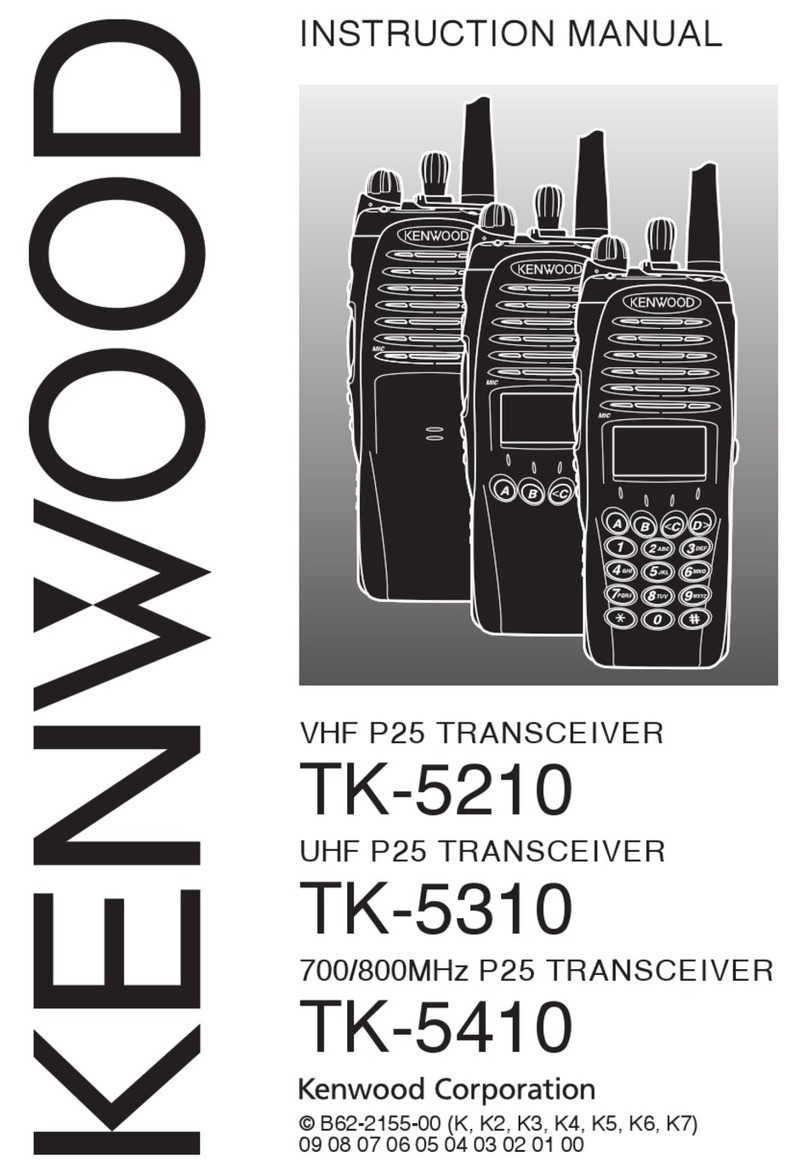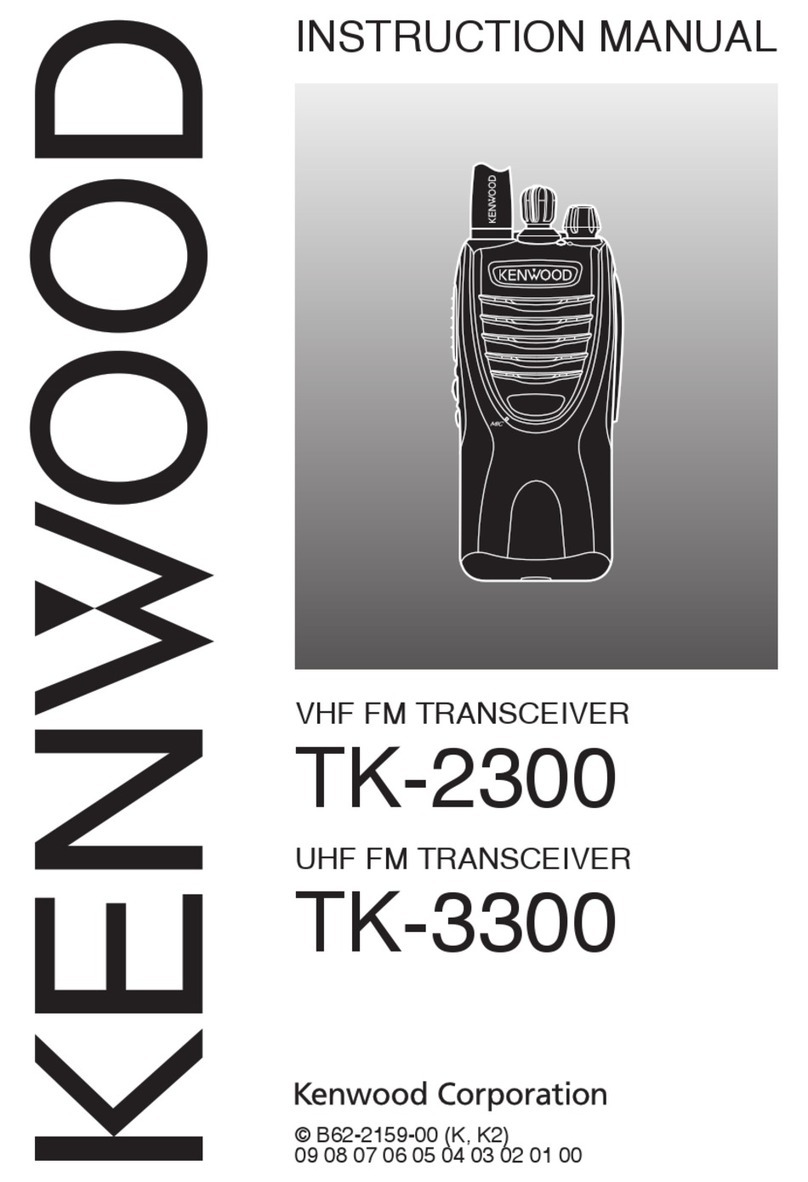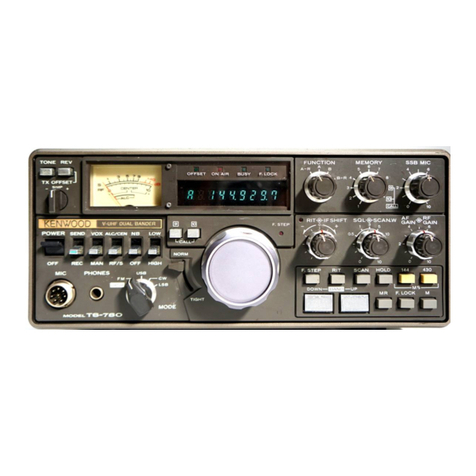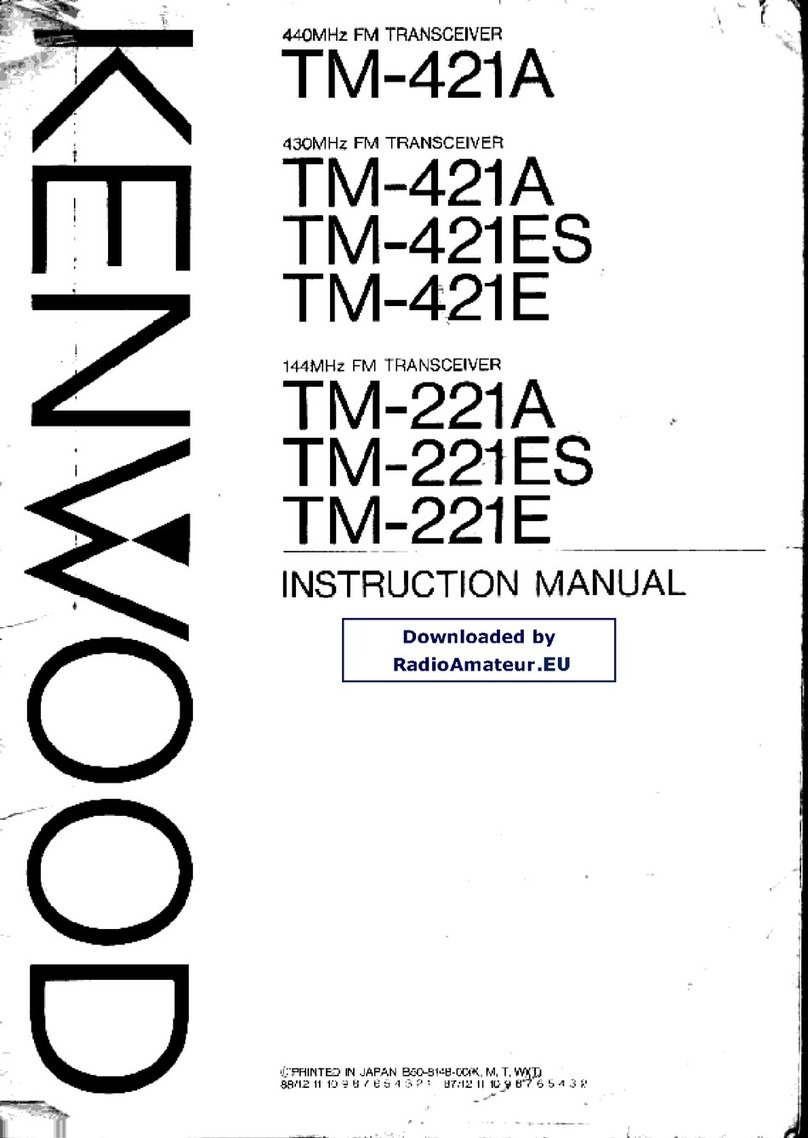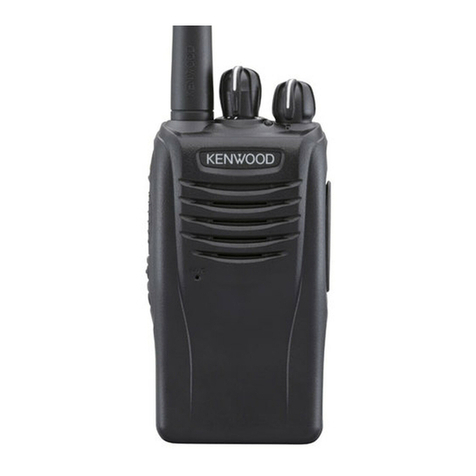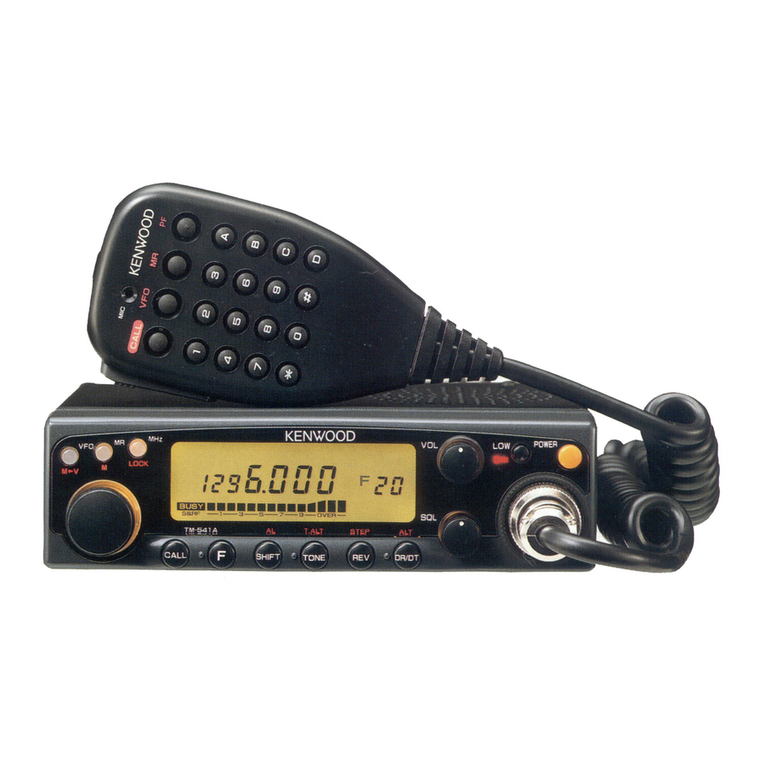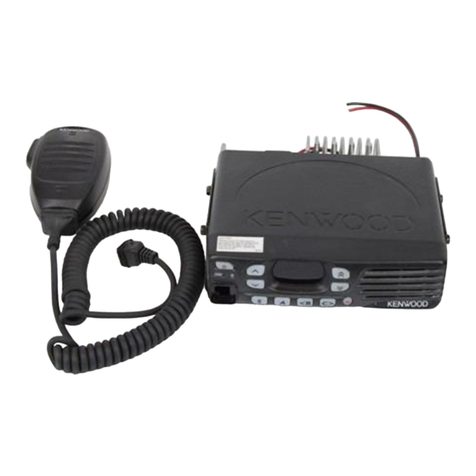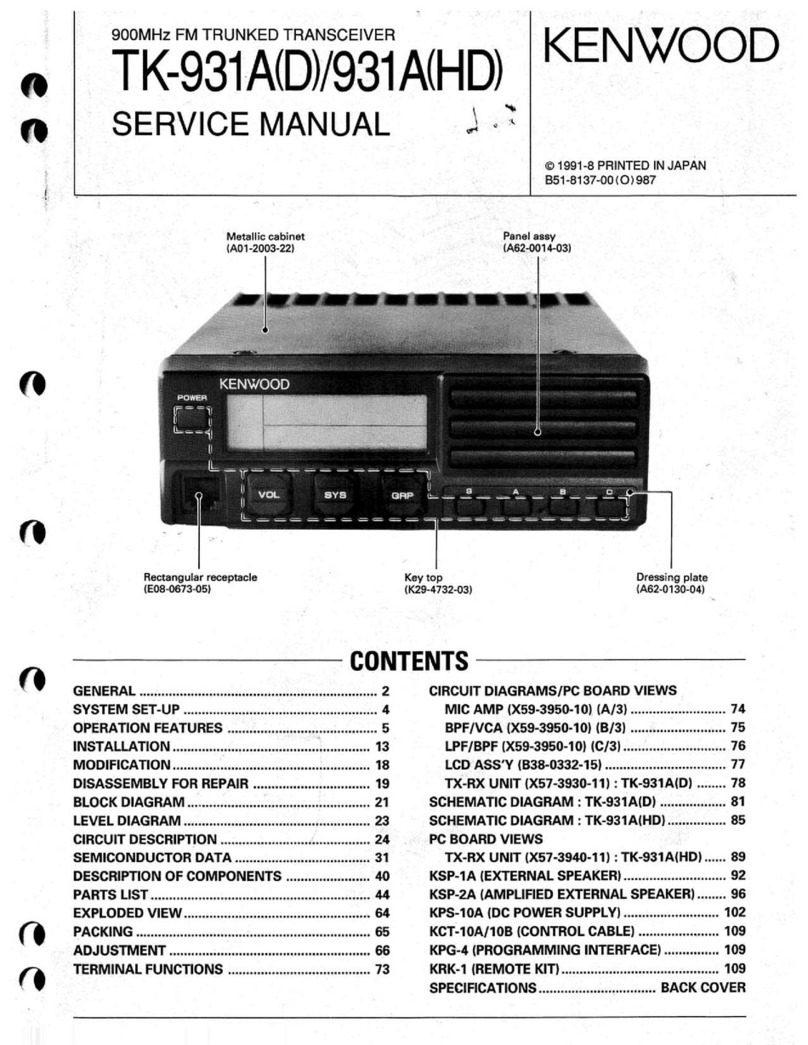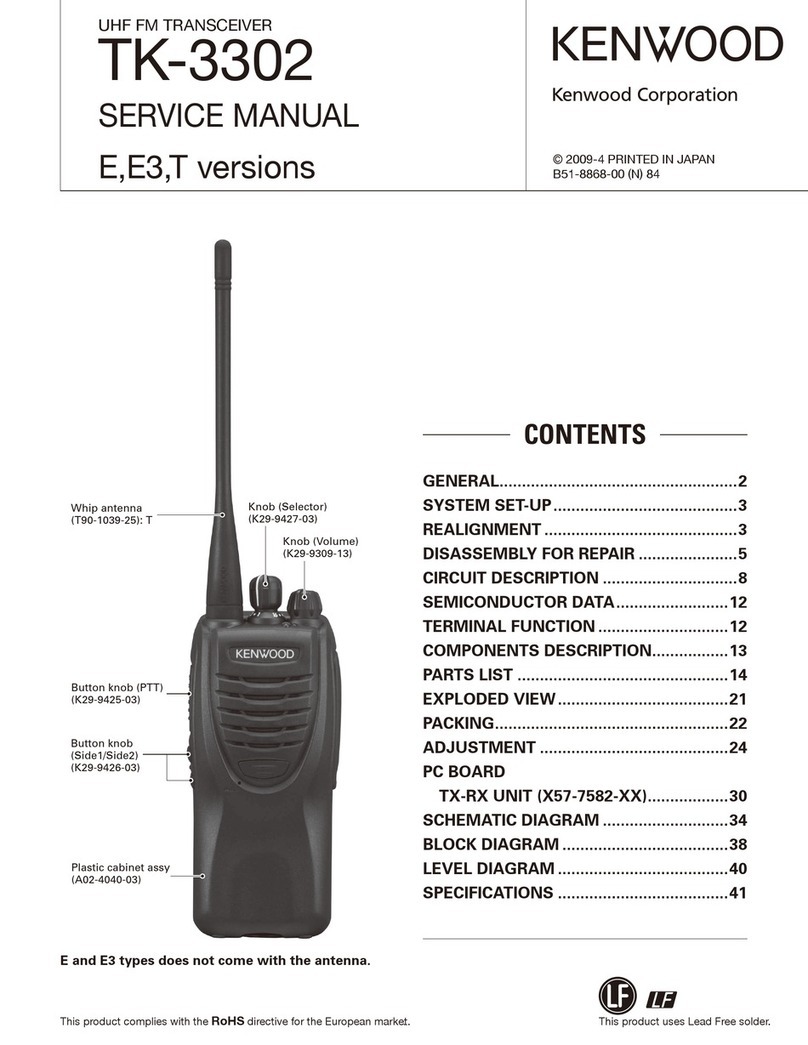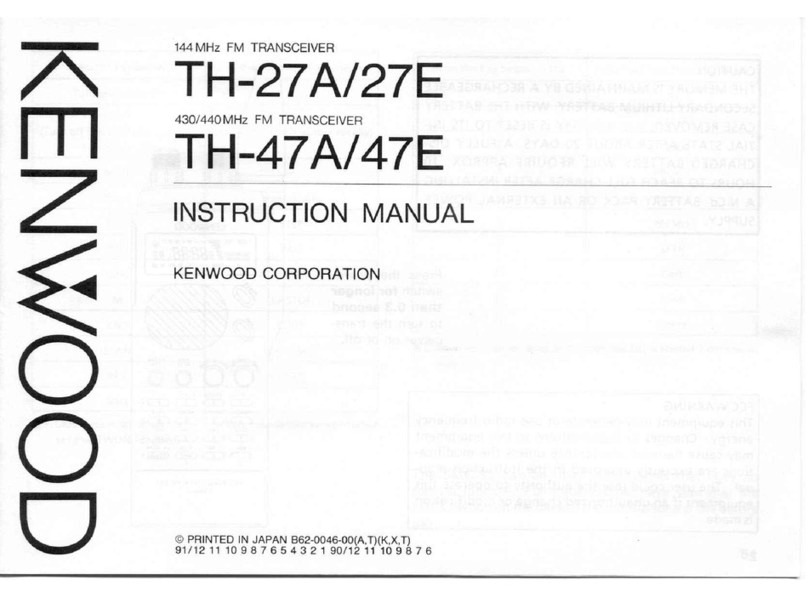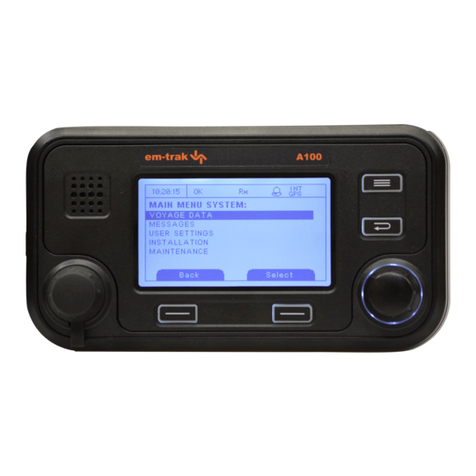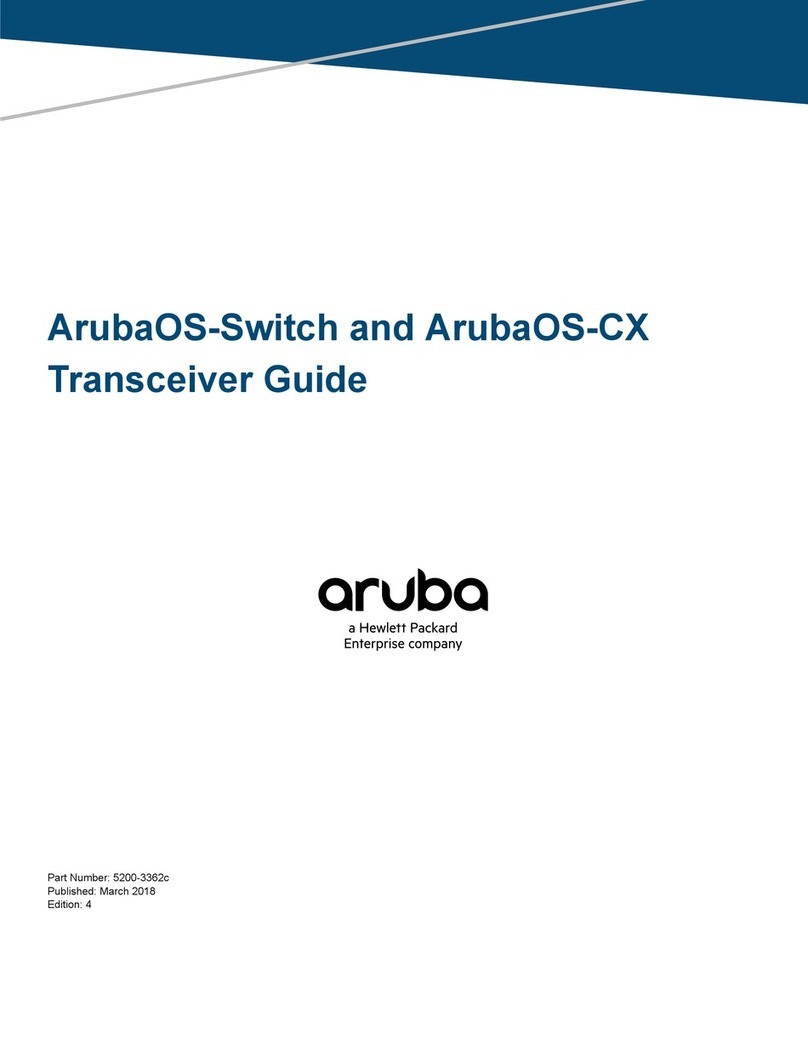
TK-280
4
OPERATING FEATURES
0S, A, 2B, and C 3key (Programmable)
-DTMF keypad (keypad model only)
Press the keys on the telephone keypad to send DTMF
tones.
=Universal connector
Connect the external KMC-25 speaker/ microphone
(optional) here. Otherwise, keep the supplied cover in place.
* : MONITOR and LAMP are arbitrary names chosen for
these buttons. They can be used for any of the auxiliary
functions.
2-3. Programmable keys
The FPU (KPG-49D) enables programmable keys to select
the following functions.
■Trunking Format
Auto Tel, AUX(only when Voice Scrambler is not selected),
Connect ID, Disconnect ID, Display Character, Emergency
(only AUX key), Function, Group Down, Group Up, Home
Group, Key Lock, Lamp, Memory (RCL/STO), Memory (RCL),
Memory (STO), Monitor A, Monitor B, Monitor C, Monitor D,
Redial, RF Power Lo, Scan, Scan Del/Add, Scan Temporary
Delete, Scrambler (Only when Voice Scrambler is selected),
System Down, System Up, TEL Disconnect and none.
■Conventional Format
AUX(only when Voice Scrambler is not selected), Channel
Down, Channel UP, Connect ID, Disconnect ID, Display
Character, Emergency (only AUX key), Function, Group Down,
Group Up, Home Channel, Key Lock, Lamp, Memory (RCL/
STO), Memory (RCL), Memory (STO), Monitor A, Monitor B,
Monitor C, Monitor D, Operator Selectable Tone, Redial, RF
Power Lo, Scan, Scan Del/Add, Scrambler (Only when Voice
Scrambler is selected), Talk Around and none.
These functions the FPU programs to the function keys are
described in the following sections.
1) Auto TEL (Trunking Format)
Automatically connects available repeaters that are
connected to telephone circuits when operating as LTR
system. The time allocated to search for available repeaters
is 60 seconds, after which connection failure occurs, a DTMF
tone is output and the function terminates.
If connection to an available circuit is made, only ID 253,
EOT or hang-up time-out can terminate the function.
2) AUX
This function can be programmed when the voice scrambler
board is not installed.
If this key is pressed, an underscore (“_”) appears at the
extreme right of the LCD and AUX port which is inside of
the transceiver turns to the active level. If pressed again,
the underscore disappears and the AUX ports turns to the
deactive level.
3) Channel up/down (Conventional Format)
When the key is pressed each time, the channel number to
be selected is incremented/decremented and repeats if held
for one second or longer.
This key works as the voice scrambler code selector in the
voice scrambler code select mode.
4) Connect ID
Pressing this key in Conventional mode, automatically sends
the preset Connect ID.
5) Disconnect ID
Pressing this key in Conventional mode, automatically sends
the preset Disconnect ID.
6) Display character
●Trunking Format
This key switches the LCD display between the system/
group number and system/group name.
●Conventinal Format
This key switches the LCD display between the group/
channel number and group/channel name.
7) Emergency
●Trunking Format
Pressing this key for longer than the programmed
“Emergency Key Delay Time” causes the transceiver to enter
the emergency mode. The transceiver jumps to the
programmed “Emergency System/Group” and transmits for
the programmed “Active Time”.
The transceiver disables mic mute while transmitting. After
finishing transmission, the transceiver receivers for the
programmed “Interval Time”. The transceiver mutes the
speaker while receiving. Following the above sequence, the
transceiver continues to transmit and receive.
●Conventinal Format
Pressing this key for longer than the programmed
“Emergency Key Delay Time” causes the transceiver to enter
the emergency mode. The transceiver jumps to the
programmed “Emergency Group/Channel” and transmits for
the programmed “Active Time”.
The transceiver disables mic mute while transmitting. After
finishing transmission, the transceiver receivers for the
programmed “Interval Time”. The transceiver mutes the
speaker while receiving. Following the above sequence, the
transceiver continues to transmit and receive.
8) Function
Pressing this key causes the transceiver to display “FCN”.
Then, pressing a DTMF key causes the corresponding
programmed function to start. This key may be convenient
when using many functions with the 12-key keypad (K3, K4
type).
